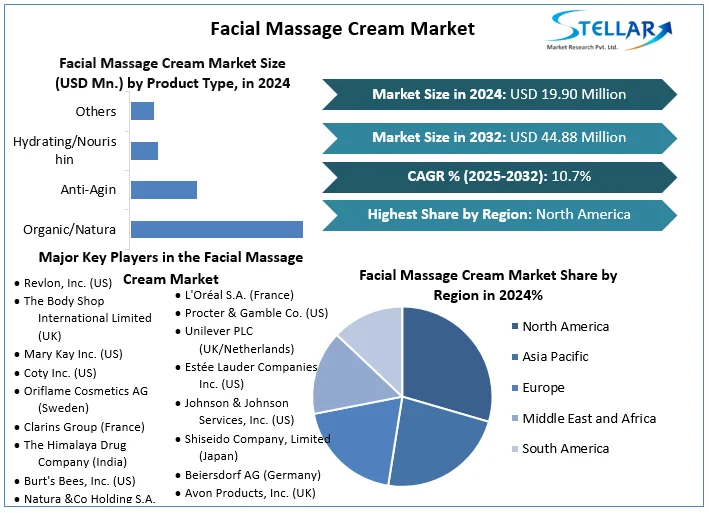Cargo Transportation Market Size To Grow At A CAGR Of 10.20% In The Forecast Period Of 2025-2032
Global Cargo Transportation Market Poised for Robust Growth Through 2032
Request Free Sample Report:https://www.stellarmr.com/report/req_sample/Cargo-Transportation-Market/2013
Market Overview
The global cargo transportation market is experiencing significant growth, driven by increasing international trade, advancements in logistics technologies, and the expansion of e-commerce. Cargo transportation encompasses the movement of goods via various modes, including road, rail, air, and sea, and plays a crucial role in global supply chains.
Market Size and Forecast
According to recent industry reports, the global cargo transportation market was valued at approximately USD 26.27 billion in 2024. Projections indicate that the market will reach USD 57.14 billion by 2032, growing at a compound annual growth rate (CAGR) of 10.20% during the forecast period from 2025 to 2032.
Key Market Drivers
Several factors are contributing to the growth of the cargo transportation market:
E-commerce Expansion: The surge in online shopping has led to increased demand for efficient and timely delivery services, boosting the need for robust cargo transportation networks.
Global Trade Growth: The rise in international trade activities necessitates the movement of goods across borders, driving the demand for diverse transportation modes.
Technological Advancements: Innovations such as real-time tracking systems, automation, and data analytics are enhancing the efficiency and reliability of cargo transportation services.
Infrastructure Development: Investments in transportation infrastructure, including ports, airports, and highways, are facilitating smoother and faster movement of goods.
Regional Insights
Asia-Pacific: The Asia-Pacific region is expected to dominate the cargo transportation market, owing to its significant share in global manufacturing and exports. Countries like China and India are major contributors to the demand for cargo transportation services.
North America: North America is witnessing steady growth in the cargo transportation market, driven by the expansion of e-commerce and the need for efficient logistics solutions.
Europe: Europe is also experiencing growth in the cargo transportation sector, supported by increasing international trade and advancements in transportation technologies.
Market Trends
Sustainability Initiatives: There is a growing emphasis on adopting eco-friendly transportation solutions, such as electric trucks and fuel-efficient vessels, to reduce carbon emissions and promote sustainability.
Digitalization: The integration of digital technologies, including blockchain and Internet of Things (IoT), is improving transparency, security, and efficiency in cargo transportation operations.
Last-Mile Delivery Solutions: The demand for quick and convenient delivery options is driving innovations in last-mile delivery solutions, such as drones and autonomous vehicles.
Conclusion
The global cargo transportation market is set for robust growth, driven by factors such as the expansion of e-commerce, global trade, technological advancements, and infrastructure development. Stakeholders in the industry, including logistics providers, technology developers, and policymakers, should focus on innovation, sustainability, and efficiency to capitalize on the burgeoning opportunities in this sector.
About us
Phase 3,Navale IT Zone, S.No. 51/2A/2,
Office No. 202, 2nd floor,
Near, Navale Brg,Narhe,
Pune, Maharashtra 411041
sales@stellarmr.com
Global Cargo Transportation Market Poised for Robust Growth Through 2032
Request Free Sample Report:https://www.stellarmr.com/report/req_sample/Cargo-Transportation-Market/2013
Market Overview
The global cargo transportation market is experiencing significant growth, driven by increasing international trade, advancements in logistics technologies, and the expansion of e-commerce. Cargo transportation encompasses the movement of goods via various modes, including road, rail, air, and sea, and plays a crucial role in global supply chains.
Market Size and Forecast
According to recent industry reports, the global cargo transportation market was valued at approximately USD 26.27 billion in 2024. Projections indicate that the market will reach USD 57.14 billion by 2032, growing at a compound annual growth rate (CAGR) of 10.20% during the forecast period from 2025 to 2032.
Key Market Drivers
Several factors are contributing to the growth of the cargo transportation market:
E-commerce Expansion: The surge in online shopping has led to increased demand for efficient and timely delivery services, boosting the need for robust cargo transportation networks.
Global Trade Growth: The rise in international trade activities necessitates the movement of goods across borders, driving the demand for diverse transportation modes.
Technological Advancements: Innovations such as real-time tracking systems, automation, and data analytics are enhancing the efficiency and reliability of cargo transportation services.
Infrastructure Development: Investments in transportation infrastructure, including ports, airports, and highways, are facilitating smoother and faster movement of goods.
Regional Insights
Asia-Pacific: The Asia-Pacific region is expected to dominate the cargo transportation market, owing to its significant share in global manufacturing and exports. Countries like China and India are major contributors to the demand for cargo transportation services.
North America: North America is witnessing steady growth in the cargo transportation market, driven by the expansion of e-commerce and the need for efficient logistics solutions.
Europe: Europe is also experiencing growth in the cargo transportation sector, supported by increasing international trade and advancements in transportation technologies.
Market Trends
Sustainability Initiatives: There is a growing emphasis on adopting eco-friendly transportation solutions, such as electric trucks and fuel-efficient vessels, to reduce carbon emissions and promote sustainability.
Digitalization: The integration of digital technologies, including blockchain and Internet of Things (IoT), is improving transparency, security, and efficiency in cargo transportation operations.
Last-Mile Delivery Solutions: The demand for quick and convenient delivery options is driving innovations in last-mile delivery solutions, such as drones and autonomous vehicles.
Conclusion
The global cargo transportation market is set for robust growth, driven by factors such as the expansion of e-commerce, global trade, technological advancements, and infrastructure development. Stakeholders in the industry, including logistics providers, technology developers, and policymakers, should focus on innovation, sustainability, and efficiency to capitalize on the burgeoning opportunities in this sector.
About us
Phase 3,Navale IT Zone, S.No. 51/2A/2,
Office No. 202, 2nd floor,
Near, Navale Brg,Narhe,
Pune, Maharashtra 411041
sales@stellarmr.com
Cargo Transportation Market Size To Grow At A CAGR Of 10.20% In The Forecast Period Of 2025-2032
Global Cargo Transportation Market Poised for Robust Growth Through 2032
Request Free Sample Report:https://www.stellarmr.com/report/req_sample/Cargo-Transportation-Market/2013
Market Overview
The global cargo transportation market is experiencing significant growth, driven by increasing international trade, advancements in logistics technologies, and the expansion of e-commerce. Cargo transportation encompasses the movement of goods via various modes, including road, rail, air, and sea, and plays a crucial role in global supply chains.
Market Size and Forecast
According to recent industry reports, the global cargo transportation market was valued at approximately USD 26.27 billion in 2024. Projections indicate that the market will reach USD 57.14 billion by 2032, growing at a compound annual growth rate (CAGR) of 10.20% during the forecast period from 2025 to 2032.
Key Market Drivers
Several factors are contributing to the growth of the cargo transportation market:
E-commerce Expansion: The surge in online shopping has led to increased demand for efficient and timely delivery services, boosting the need for robust cargo transportation networks.
Global Trade Growth: The rise in international trade activities necessitates the movement of goods across borders, driving the demand for diverse transportation modes.
Technological Advancements: Innovations such as real-time tracking systems, automation, and data analytics are enhancing the efficiency and reliability of cargo transportation services.
Infrastructure Development: Investments in transportation infrastructure, including ports, airports, and highways, are facilitating smoother and faster movement of goods.
Regional Insights
Asia-Pacific: The Asia-Pacific region is expected to dominate the cargo transportation market, owing to its significant share in global manufacturing and exports. Countries like China and India are major contributors to the demand for cargo transportation services.
North America: North America is witnessing steady growth in the cargo transportation market, driven by the expansion of e-commerce and the need for efficient logistics solutions.
Europe: Europe is also experiencing growth in the cargo transportation sector, supported by increasing international trade and advancements in transportation technologies.
Market Trends
Sustainability Initiatives: There is a growing emphasis on adopting eco-friendly transportation solutions, such as electric trucks and fuel-efficient vessels, to reduce carbon emissions and promote sustainability.
Digitalization: The integration of digital technologies, including blockchain and Internet of Things (IoT), is improving transparency, security, and efficiency in cargo transportation operations.
Last-Mile Delivery Solutions: The demand for quick and convenient delivery options is driving innovations in last-mile delivery solutions, such as drones and autonomous vehicles.
Conclusion
The global cargo transportation market is set for robust growth, driven by factors such as the expansion of e-commerce, global trade, technological advancements, and infrastructure development. Stakeholders in the industry, including logistics providers, technology developers, and policymakers, should focus on innovation, sustainability, and efficiency to capitalize on the burgeoning opportunities in this sector.
About us
Phase 3,Navale IT Zone, S.No. 51/2A/2,
Office No. 202, 2nd floor,
Near, Navale Brg,Narhe,
Pune, Maharashtra 411041
sales@stellarmr.com
0 Comments
0 Shares
192 Views
0 Reviews









